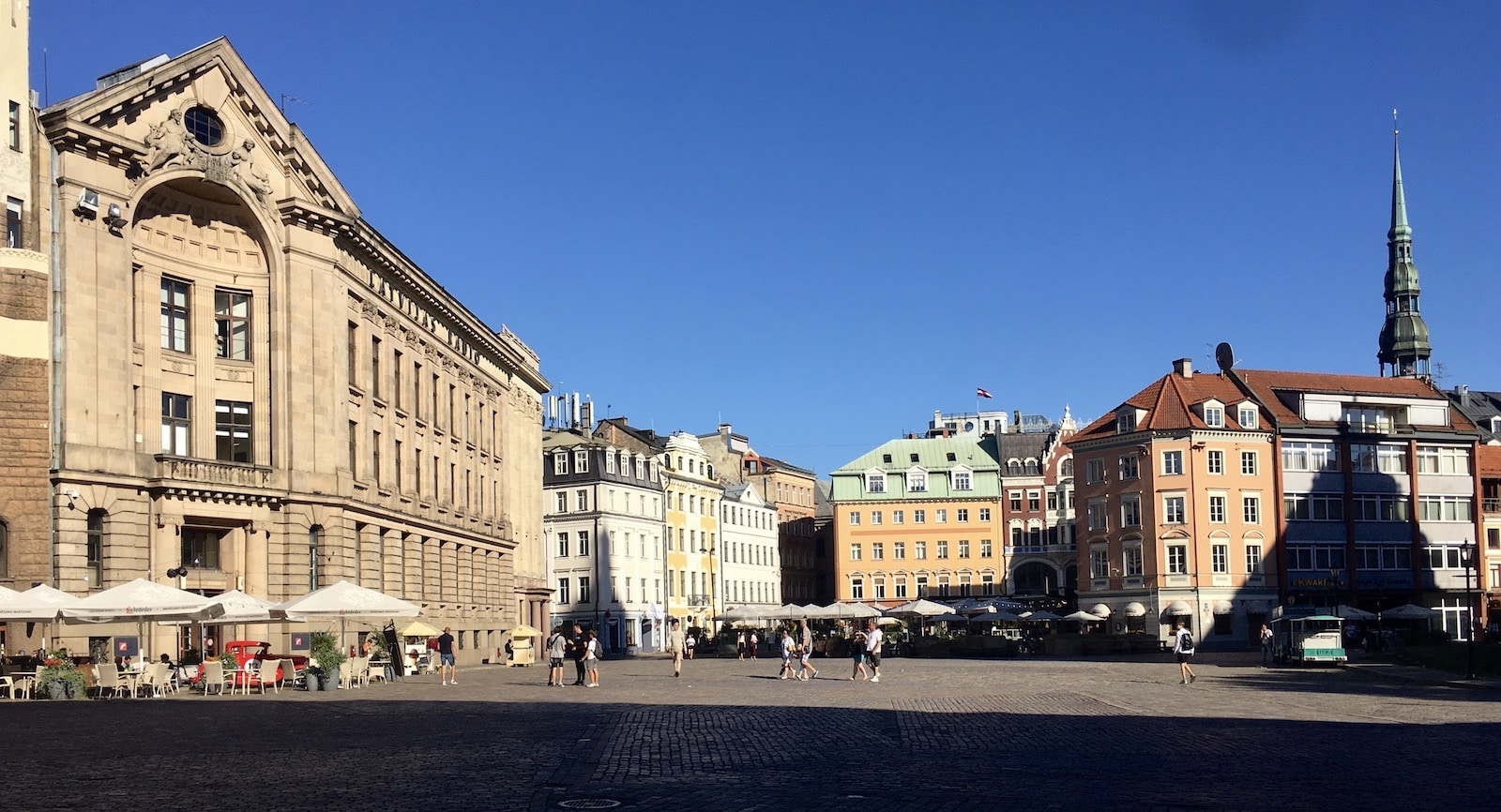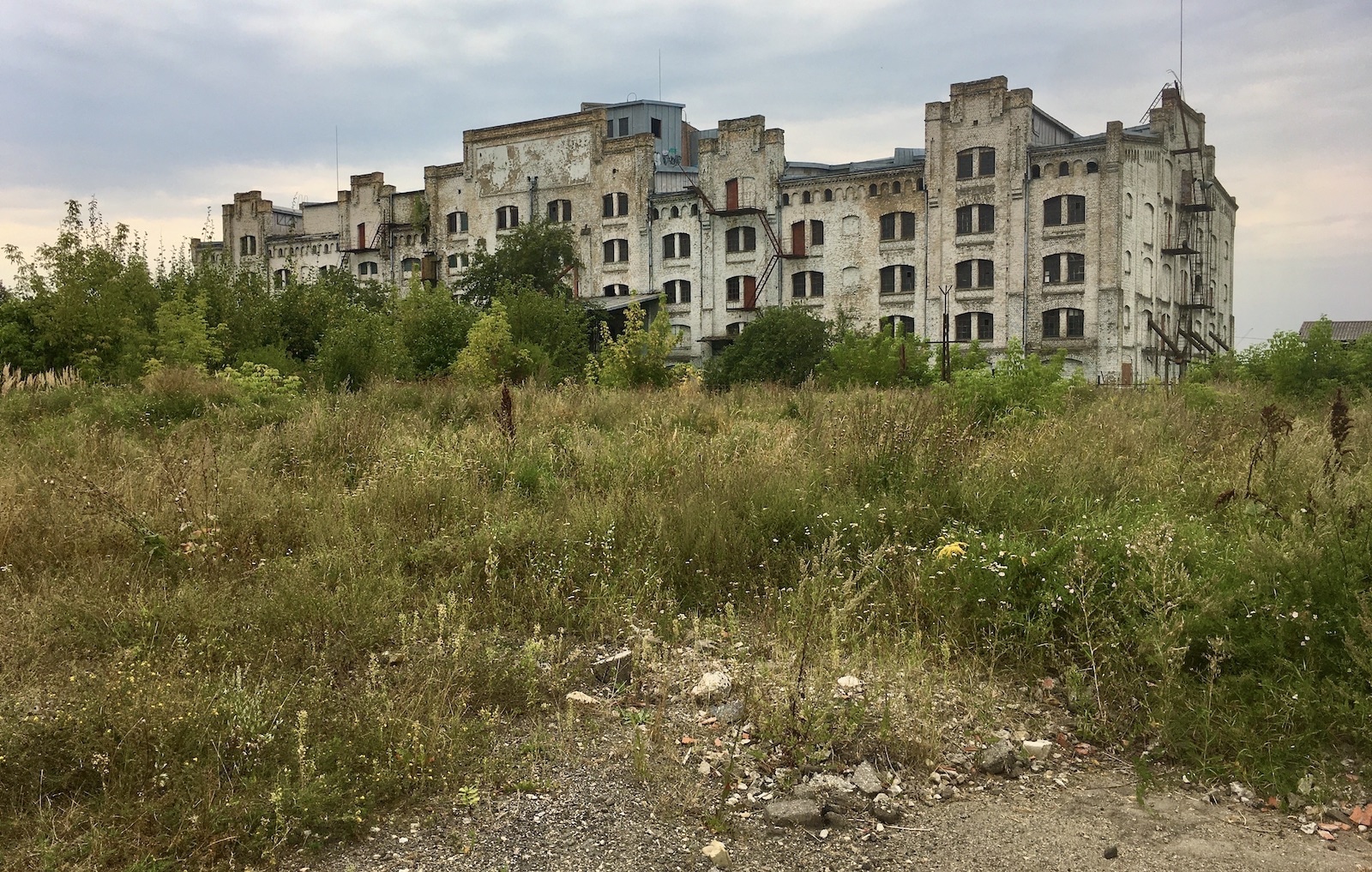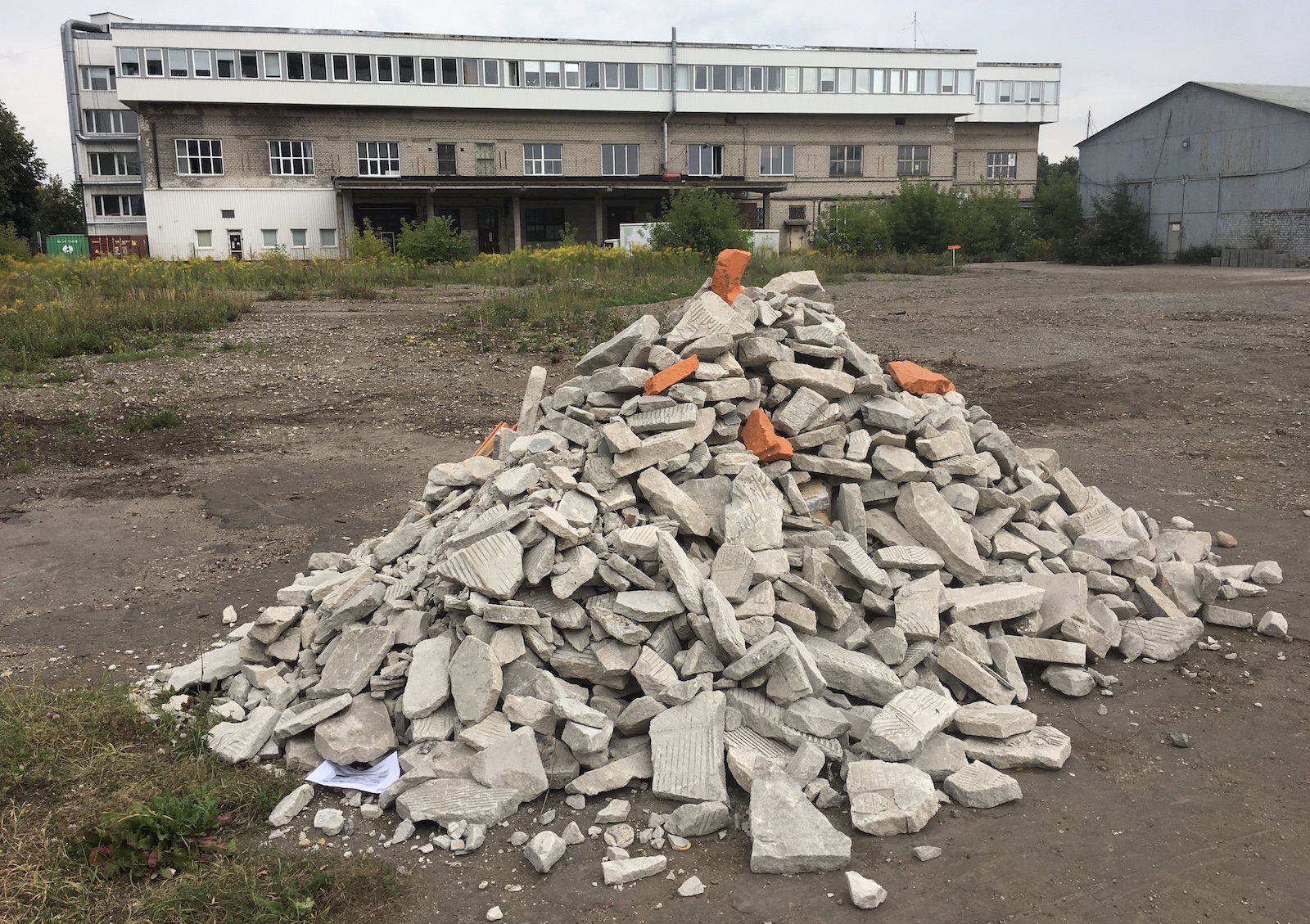The Riga Biennial of Contemporary Art – RIBOCA is one of the few major art festivals not to cancel for 2020 in the wake of the Coronavirus epidemic. Originally due to open in May, it was delayed until August/September for a slightly scaled back opening.
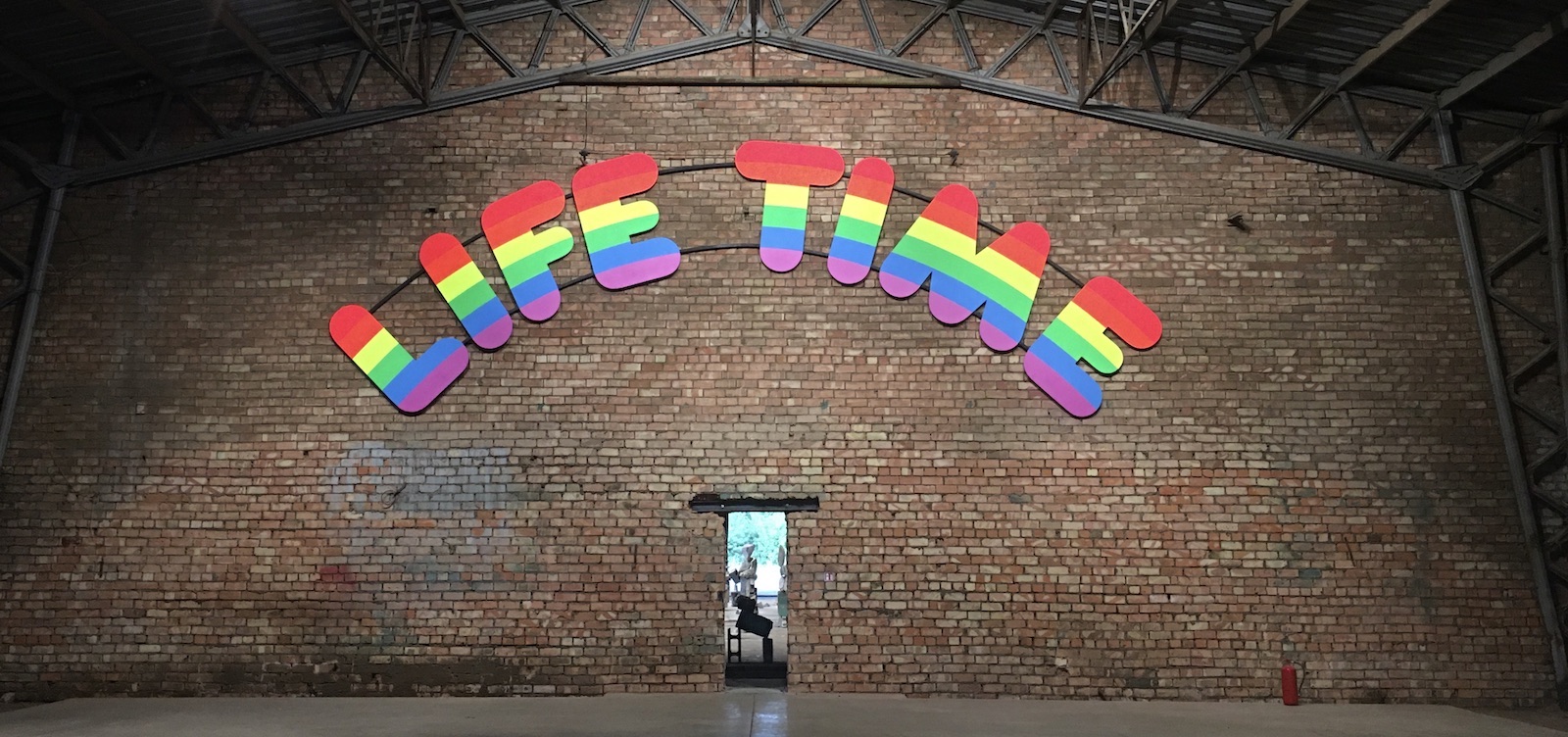
This is the second iteration of what, in 2018, was revealed to be a top quality biennial in a fascinating location. It is an addition to an admittedly rather crowded calendar of biennial cities, but Riga’s RIBOCA 2 offers enough of a unique style and location to make it a worthy entry on any serious art lovers calendar.
Entitled And Suddenly it All Blossoms, its home in Riga is the fascinating Andrejsala, the port region on the northern part of the city. Now derelict and abandoned during the soviet era, and earlier, buildings lie overgrown like a Tarkovsy film set.
The parallel is appropriate as the organisers have decided to expand the concept of the festival to become online and incorporate a film, whereby the physical location of the festival is reimagined as a post apocalyptic set with the possibilities of what could ‘Blossom’ in a potential future.
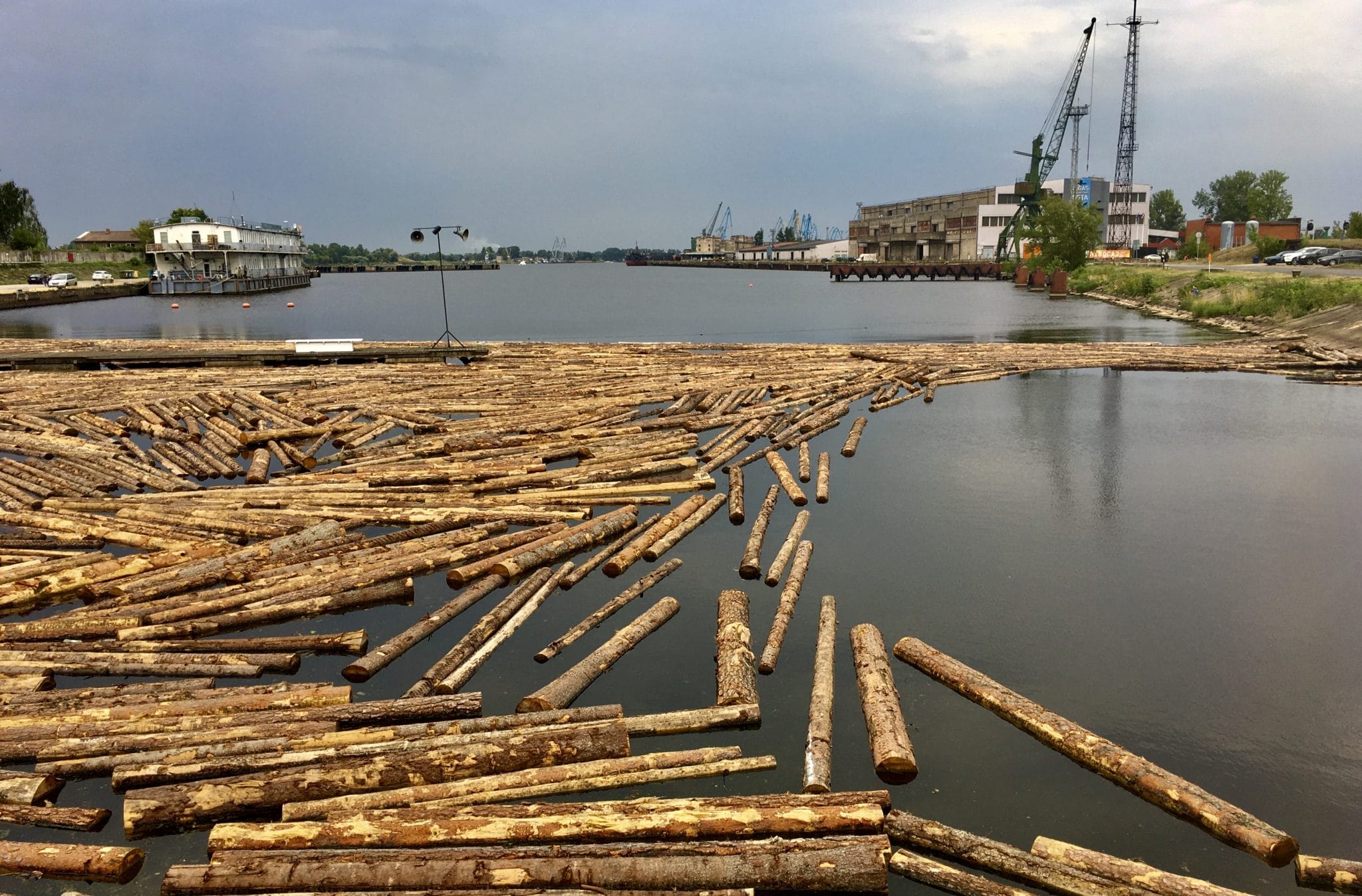
The founder of RIBOCA, Agniya Mirgorodskaya, speaking to the The Art Newspaper stated: “Like many, we were caught off-guard by how quickly the situation escalated. We spent many sleepless nights deciding what to do. We finally reached the decision to shoot a film …. and move our public programme online.”
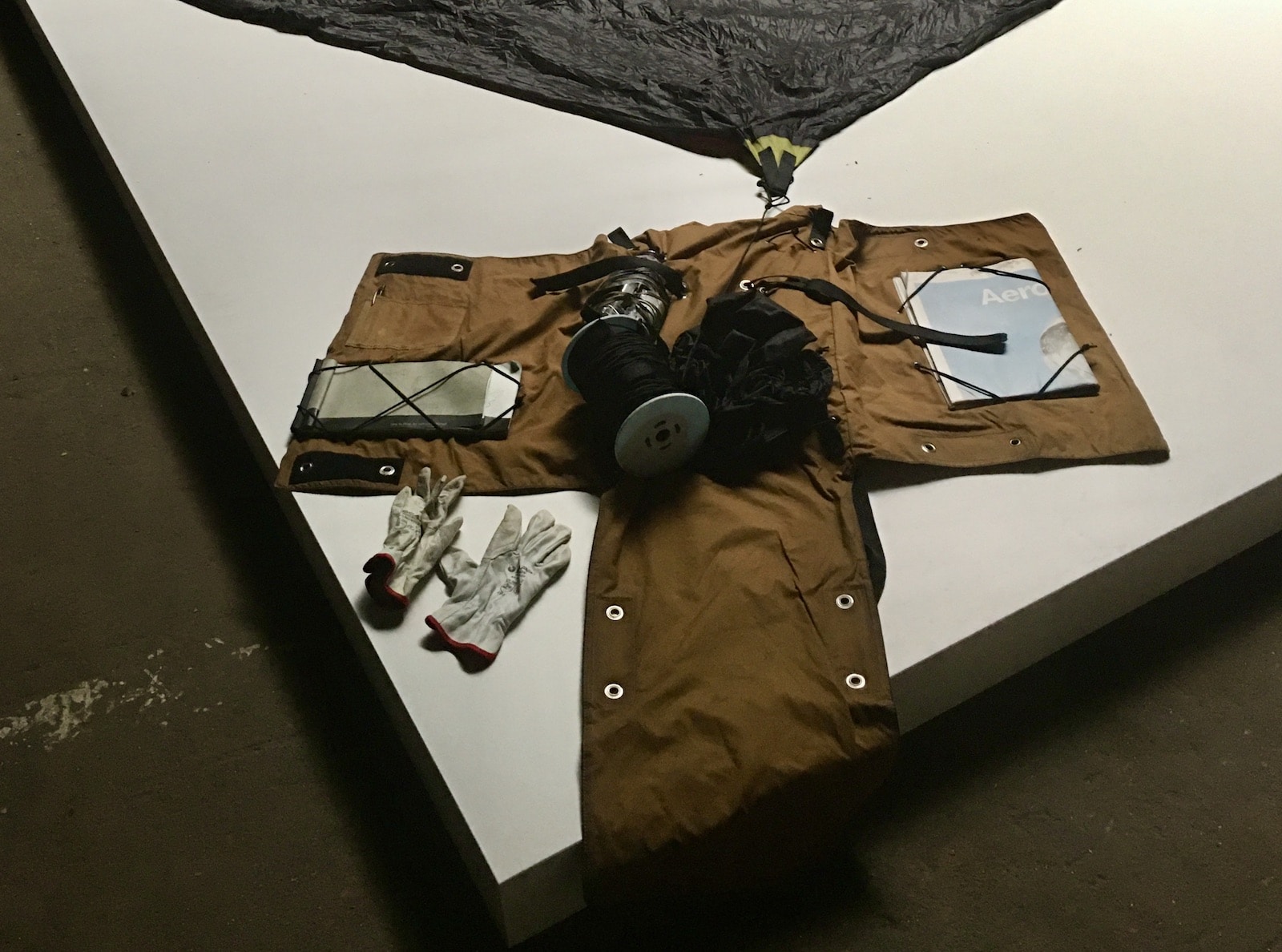
The festival itself runs for about a month and, although it is restricted to the one location, it is a fabulous one: Andrejsala is a remarkably atmospheric venue. It is very large – the Arsenale at Venice would be a valid comparison in more ways than one – and the vast derelict and semi-derelict buildings are in turns awe-inspiring and highly photogenic.
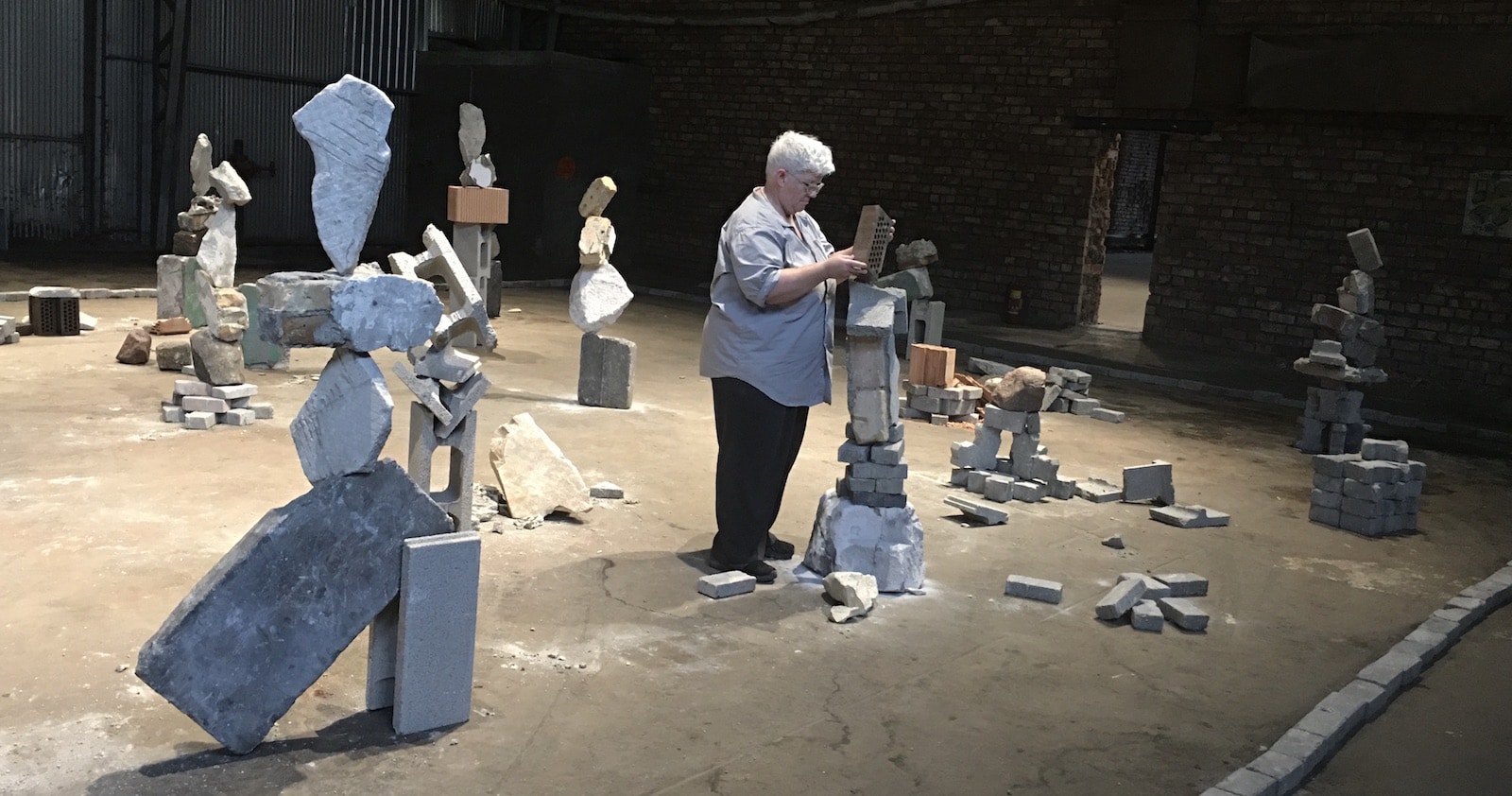
The organisers have taken full advantage of the size and scope of this region to create a numbered sequence of exhibits which takes the visitor on a lengthy exploration of the area. In their words:
‘…an odyssey, where visitors encounter propositions for the revaluation of time, power, doubt, poetry, gender, silence, emotion, ruins, healing, …magic, dreams, wildness, fictions and futures – building blocks for our conception of life’.
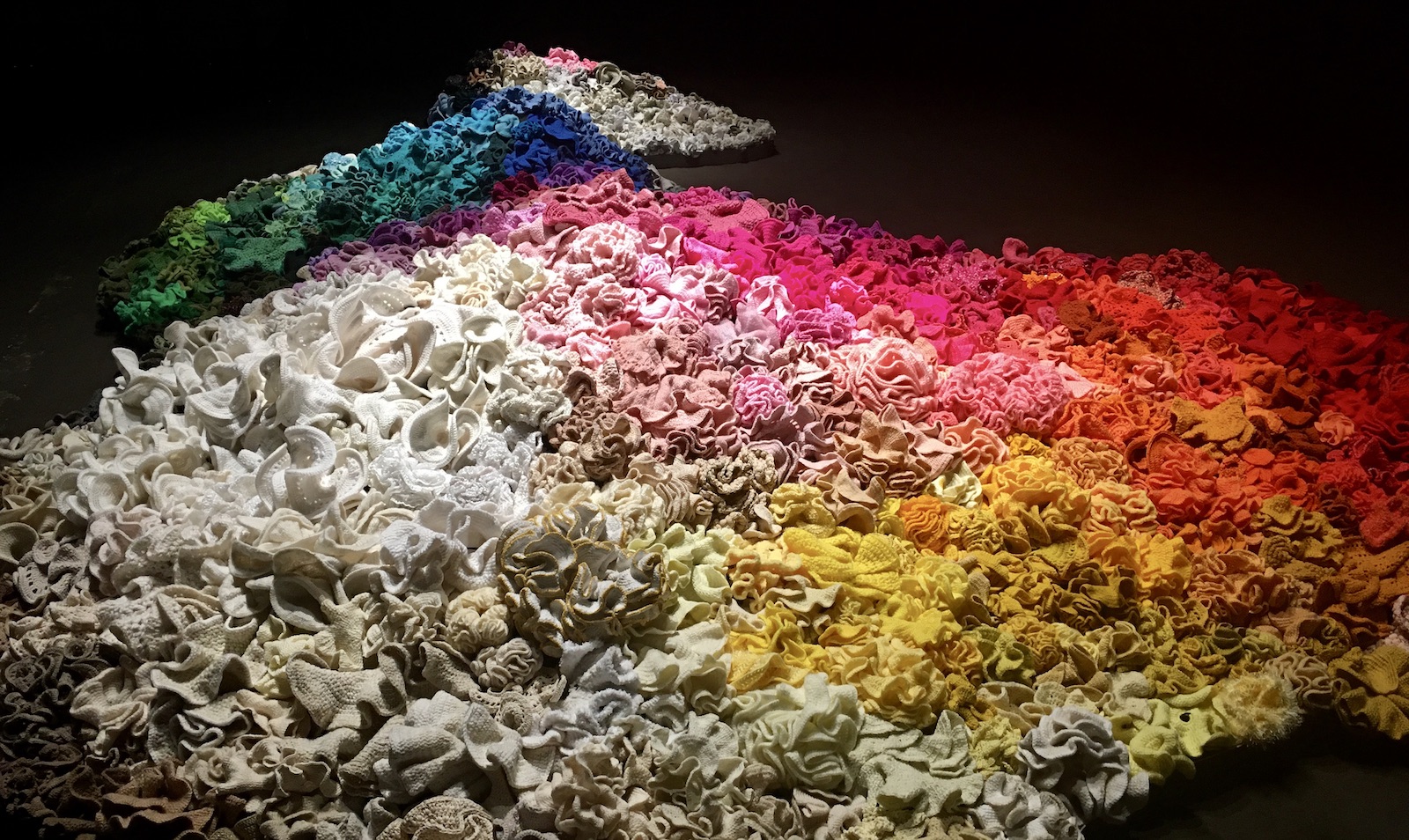
Starting at an area called the Hanger, the path stretches along rough gravel walkways via the Small House, Paintball Field, Greenhouse, Meadows and Harbour to the main venue: the three storey ‘Port Building’ – a semi-derelict concrete warehouse. It is huge, dry and fortunately has a small cafe where you can rest and recover from your long walk, before tackling its three expansive floors.
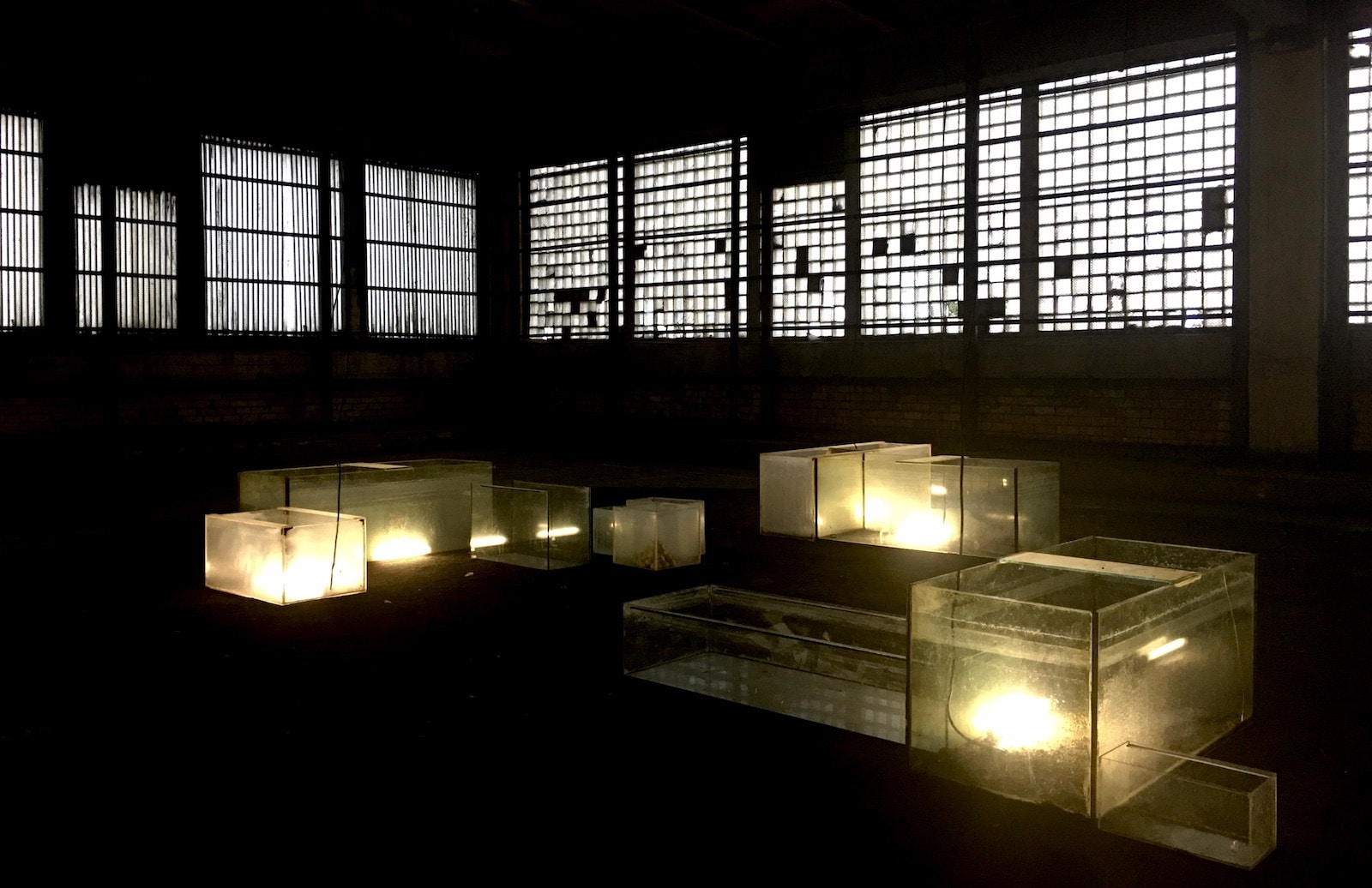
Its a big building and the sculptures, installations and films have plenty of space to breathe in the dimly illuminated rooms. The Festival is committed to promoting new work and Baltic Regional Artists. More than 50% of the work on view are from these artistic communities but that still leaves plenty of room for a selection from some heavyweight international artists.
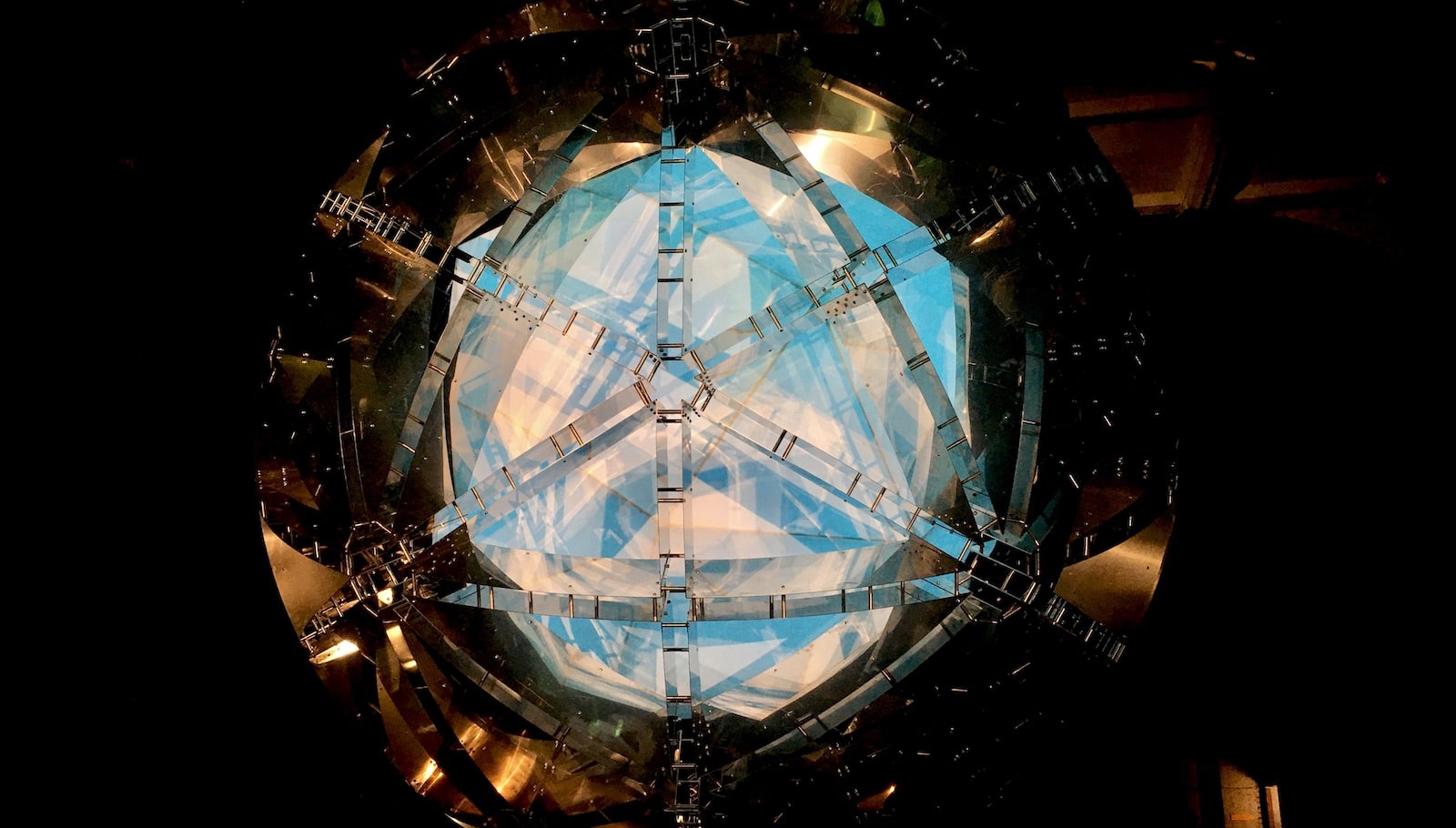
Amongst them Ugo Rondinone, presents the rainbowed Life Time, both a riddle and a manifesto; Tomas Saraceno gives us the Aerocene Backpack, an ecologically sound method of collecting atmospheric data; Pierre Huyghe’s De-extinction film examines the microscopic worlds of an amber stone; Valdis Celms presents the large scale kinetic sculpture Positron; Edith Dekyndt’s Visitation Zone installation has large vitrines filled with fermenting sediments of Baltic products sourced from the warehouse and Cyprien Gaillard two films that look at the ruins and ghosts of modernity.
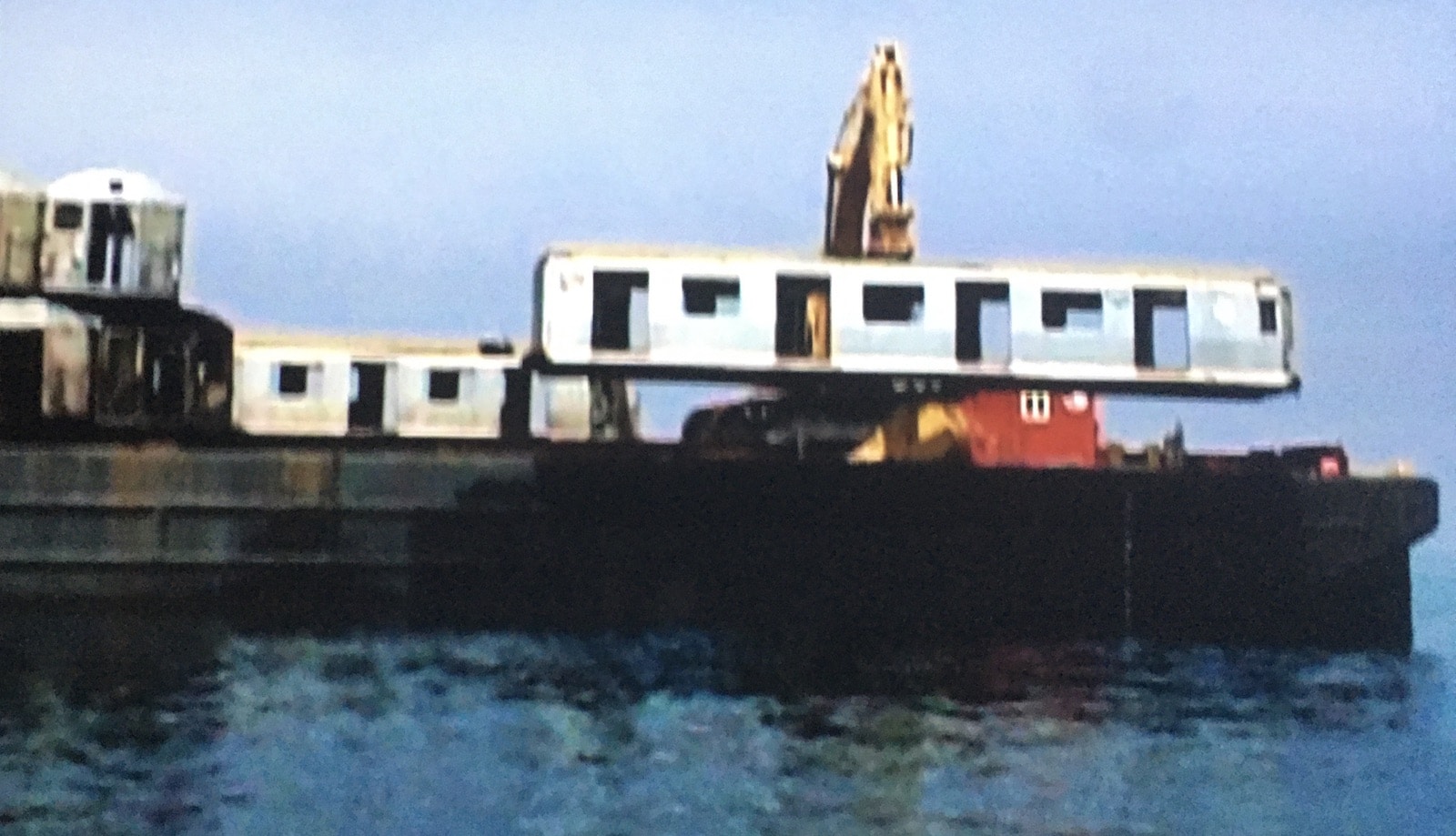
For a reduced programme it still punches well above its weight with a very impressive selection of artists. Even on this scale it is well worth a journey to this beautiful and peaceful medieval city, and if you can’t make it this time, be sure to ink RIBCOCA 3 in your diary for summer 2022.
RIBOCA 2 will run in Riga until 13 September 2020
For more information visit rigabiennial.com
For our curated recommendations of Art, Culture and Travel books visit the CELLOPHANELAND* bookstore




